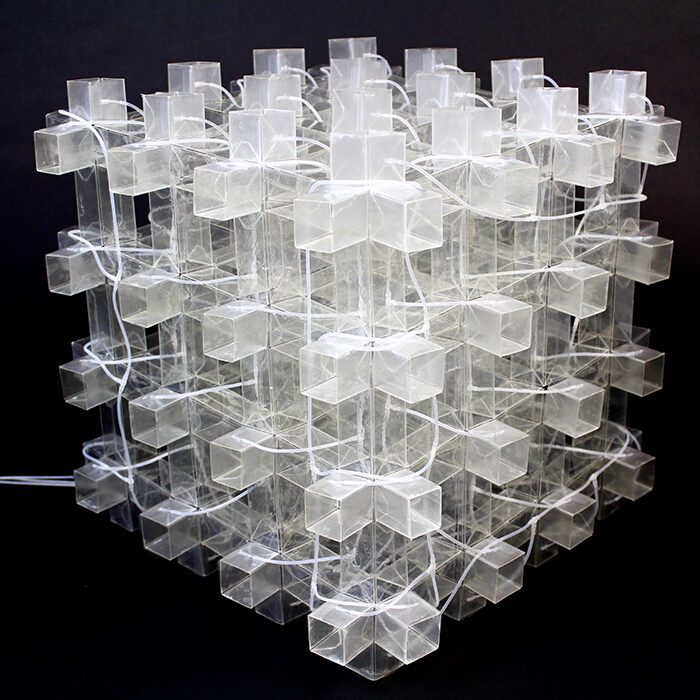Chuck Hoberman, lecturer in architecture at the Harvard Graduate School of Design, is part of a team of cross-Harvard researchers who have developed a foldable material that can change size, volume, and shape while being versatile, tunable, and self-actuated.
Composed of a network of cubes, the material can fold flat and hold the weight of an elephant, and just as quickly can pop back into form. It can be used from the nanoscale up to the meter-scale and could be used to form anything from tiny surgical stents to portable, large-scale domes for disaster relief.
“This structural system has fascinating implications for dynamic architecture including portable shelters, adaptive building facades, and retractable roofs,” Hoberman said. “Whereas current approaches to these applications rely on standard mechanics, this technology offers unique advantages such as how it integrates surface and structure, its inherent simplicity of manufacture, and its ability to fold flat.

The research was led by Katia Bertoldi, the John L. Loeb Associate Professor of the Natural Sciences at Harvard’s John A. Paulson School of Engineering and Applied Sciences (SEAS); James Weaver, senior research scientist at the Wyss Institute for Biologically Inspired Engineering; and Hoberman.
The structure is inspired by an origami technique called snapology, and is made from extruded cubes with 24 faces and 36 edges. Like origami, the cube can be folded along its edges to change shape. The team demonstrated, both theoretically and experimentally by a centimeter-scale prototype, that the cube can be deformed into many different shapes by folding certain edges, which act like hinges.

The team embedded pneumatic actuators into the structure, which can be programmed to deform specific hinges, changing the cube’s shapes and size, and removing the need for external input. The team connected 64 of these individual cells to create a 4-by-4-by-4 cube that can grow, and shrink, change its shape globally, change the orientation of its microstructure, and fold completely flat. As the structure changes shape, it also changes stiffness—meaning one could make a material that’s very pliable or very stiff using the same design.
To learn more, visit the Harvard Gazette (including video) and The Telegraph.
